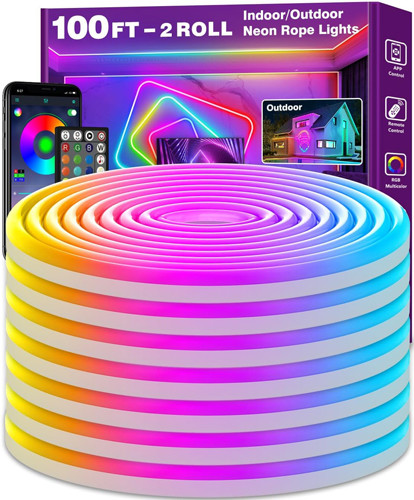
In the realm of modern lighting, LEDs have undoubtedly emerged as the beacon of efficiency, longevity, and sustainability. Their widespread adoption in various lighting applications. However, amidst their many virtues, LEDs are not immune to a peculiar phenomenon: flickering. This intermittent pulsing of light, often imperceptible to the naked eye. So, what causes LEDs to flicker, and what are the factors that contribute to this phenomenon? Let’s delve into the intricacies of LED flickering to shed light on its underlying causes and potential solutions.
What Causes LEDs to Flicker
1. Voltage Fluctuations: The Ripple Effect on LED Stability
LED performance is highly sensitive to variations in voltage. If the voltage supplied to the LED fluctuates, even slightly, it can result in corresponding fluctuations in light output, manifesting as flicker. Common sources of voltage fluctuations include electrical grid instability, power supply issues, and incompatible dimmer switches.
2. Incompatible Dimmers: Illuminating the Dimming Dilemma
Dimmer switches are often used to adjust the brightness of LEDs, providing flexibility and energy savings. However, not all dimmers are compatible with LED technology. Using an incompatible dimmer can cause LEDs to flicker, particularly at lower brightness levels. This is because traditional dimmer switches are designed for use with incandescent bulbs and may not provide a smooth and consistent dimming curve for LEDs.
3. Electromagnetic Interference (EMI): Lighting in the Field of Disturbance
In environments with high levels of electromagnetic interference, such as those near heavy machinery or radio transmitters, LEDs may experience flickering due to electromagnetic induction. EMI can induce fluctuations in the electrical current flowing through the LED, leading to flicker. Shielding the LED circuitry or using filters to mitigate EMI can help reduce flickering in such environments.
4. Temperature Variations: The Heat is On for LED Stability
Temperature fluctuations can also influence LED performance and contribute to flickering. LEDs are sensitive to changes in temperature, with higher temperatures generally leading to increased light output. However, excessive heat can affect the stability of the LED driver and lead to flickering. Conversely, extremely low temperatures can also impact LED performance, particularly in outdoor applications.
5. Driver Issues: Steering Clear of Instability
The LED driver plays a crucial role in regulating the electrical current supplied to the LED. Issues with the driver, such as inadequate design, poor quality components, or manufacturing defects, can result in unstable current output and flickering. Upgrading to a higher-quality driver or ensuring proper ventilation and heat dissipation can help mitigate driver-related flickering issues.
6. Age and Wear: Illuminating the Aging Process
Like all electronic components, LEDs degrade over time with use. As LEDs age, their performance may deteriorate, leading to increased flickering. This degradation can be accelerated by factors such as high operating temperatures, overvoltage conditions, or poor thermal management. Regular maintenance and timely replacement of aging LEDs can help minimize flickering due to age-related factors.
7. Pulse Width Modulation (PWM): The Flicker Effect of Dimming
PWM is a technique commonly used for dimming LEDs by rapidly switching the LED on and off at varying intervals. While PWM dimming is an efficient and cost-effective method, it can introduce perceptible flicker, especially at lower dimming levels. Increasing the frequency of PWM signals or using alternative dimming methods, such as analog dimming, can help reduce flicker associated with PWM.
Conclusion: Enlightening Solutions for Flicker-Free Illumination
In conclusion, while LEDs offer numerous advantages over traditional lighting technologies, they are not immune to flickering, a phenomenon that can arise from various factors ranging from voltage fluctuations to driver issues. Understanding the causes of LED flicker is crucial for effectively addressing and mitigating this issue, ensuring a stable and reliable lighting experience. As LED technology continues to evolve, addressing flicker-related concerns will remain a key focus area for lighting manufacturers and designers alike, paving the way for even more efficient and flicker-free illumination solutions in the future.
 WOWOW Faucets
WOWOW Faucets






您好!Please sign in